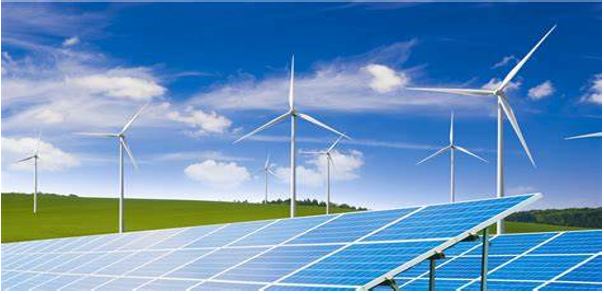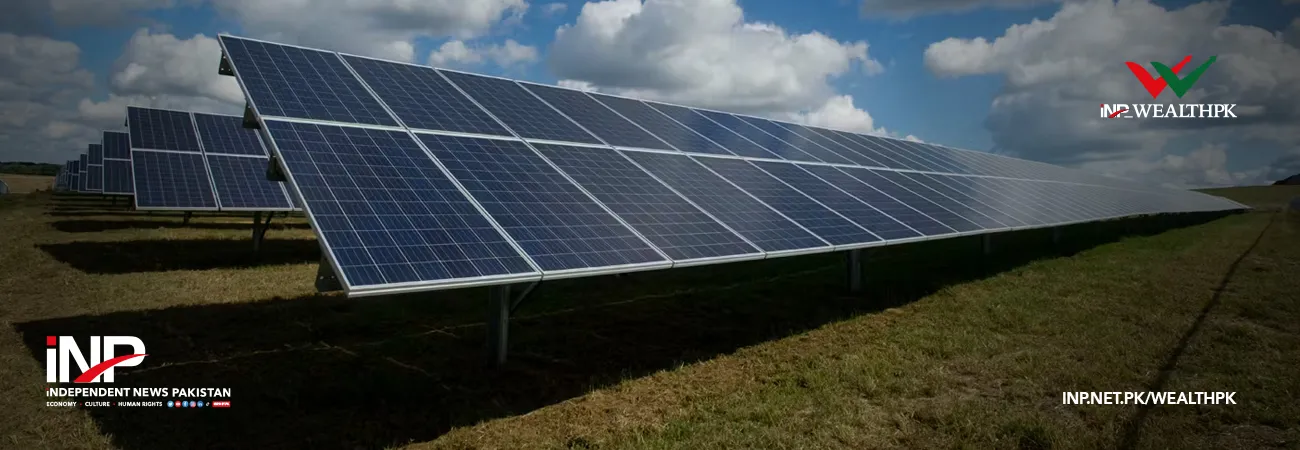INP-WealthPk
Amir Saeed
Grid limitations and escalating costs hinder renewable energy’s contribution despite rapid solar adoption and new large-scale installations.

The Pakistan Electricity Review 2025, released by Renewables First, a think tank for energy and environment, provides a detailed analysis of the country’s power sector during the fiscal year 2023-24 (FY24). The year was notable for a record surge in solar photovoltaic panel imports from China, which accelerated rooftop solar installations across Pakistan.
By March 2025, the country’s net-metered solar capacity reached 4.9GW, with many behind-the-meter installations remaining undocumented, suggesting the actual installed capacity could be significantly higher.
Despite this rapid growth in distributed solar, the overall share of renewable energy in electricity generation remained stagnant at 5%, well below the government’s 2030 target of 30%.
The total installed power generation capacity reached 46.2GW following the addition of three new utility-scale solar plants, which slightly increased the share of utility-scale renewables from 6% to 7%. However, total electricity generation stood at 137TWh (terawatt hour) in FY24, and renewables’ contribution did not grow accordingly.
Transmission bottlenecks and overloaded grid infrastructure continued to impede efficient power transfer, especially from southern generation zones to the energy-intensive northern regions.
These constraints forced the system operator to reduce dispatch from lower-cost plants and rely more heavily on expensive RLNG-based generation. Consequently, the energy purchase price soared to Rs1.3 trillion, with RLNG generation alone accounting for Rs568 billion, approximately 51% of total energy purchases.
Capacity payments sharply rose to Rs1.9 trillion in FY24, a 46% year-on-year increase, mainly due to high fixed costs from new coal and RLNG plants. Consumers bear the cost of unused capacity from these plants through higher tariffs, straining financial sustainability.
A decline in electricity generation led to a slight 7% reduction in the energy purchase price. Despite timely tariff adjustments by National Electric Power Regulatory Authority, circular debt increased to Rs2.4 trillion by the end of FY24, a 3.6% rise over the previous year.
Speaking to WealthPK, Rabia Babar, Manager of Data-Energy and Climate at Renewables First, highlighted the growing disconnect between consumers and the national power system.
She said, “Consumers are telling us something, loud and clear: the system isn’t working for them, so they’re building their own.”
She explained that as more people adopted solar energy, the already outdated, overloaded, and poorly planned national grid was coming under increasing strain. “Transmission bottlenecks, particularly in transferring power from southern generation zones to northern demand centres, remain a significant challenge.”
“These constraints have forced the system operator to rely heavily on costly RLNG plants, pushing the energy purchase price to Rs1.3 trillion, with RLNG alone accounting for Rs568 billion – more than half of the total,” she noted.
She also pointed to the alarming rise in capacity payments, which are fixed payments made to power producers to keep their plants ready regardless of electricity purchase.
“These payments increased by 29% in FY23 and surged again by 46% in FY24, reaching Rs1.9 trillion. The main driver behind this rise is the underutilisation of generation capacity, especially from newly commissioned coal and RLNG plants,” Ms Babar noted.
Credit: INP-WealthPk













